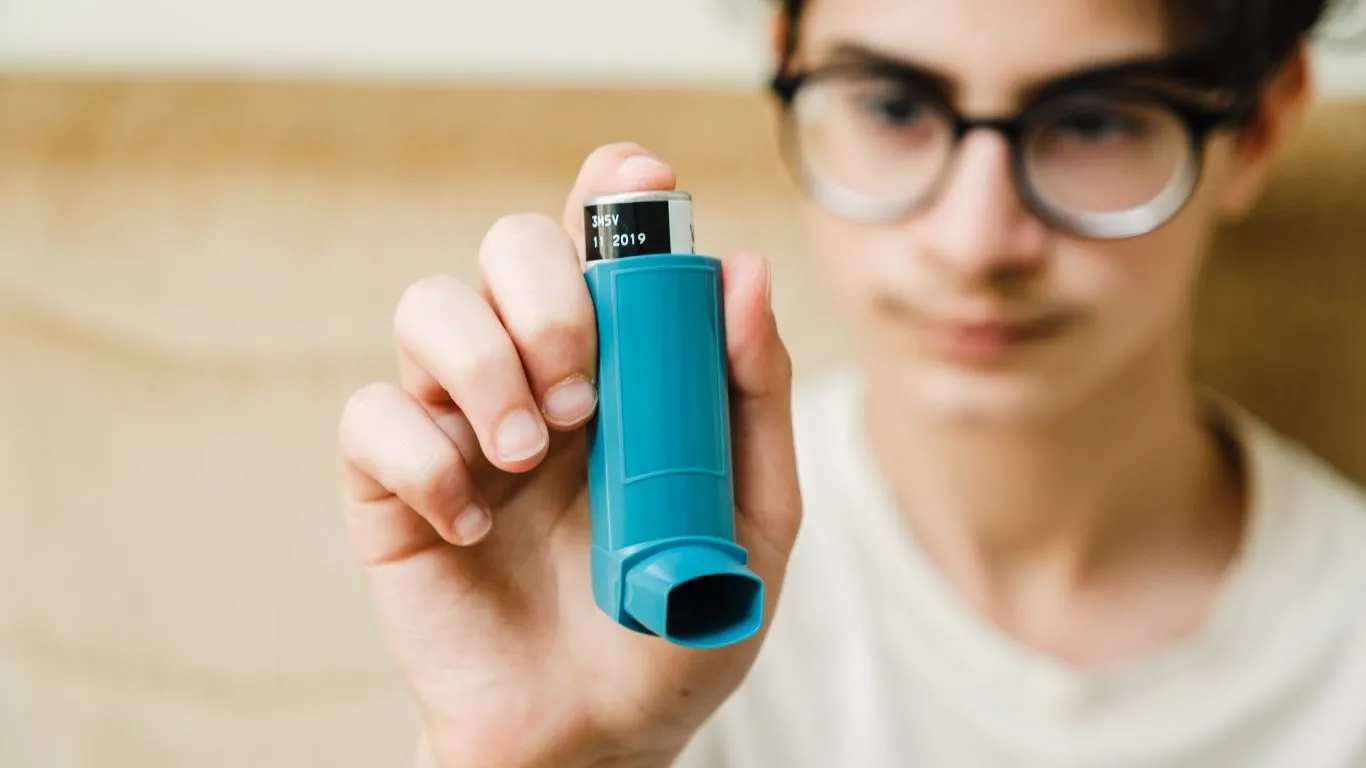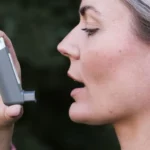How to Monitor Asthma at Home: Simple Tips for Better Control 🫁💨
Why It’s Important to Keep an Eye on Your Asthma 🏡
So, here’s the deal: Asthma isn’t something that just goes away. But if you can track it at home, you’re way more likely to catch flare-ups before they get out of hand. It’s like catching a cold early—you deal with it faster and feel better sooner.
When you monitor your asthma regularly, you’ll notice patterns, like if certain things (dust, pollen, exercise) make your breathing worse. You can also make sure your meds are working like they should. Sounds simple, right? But it can seriously make a huge difference.

How to Actually Monitor Your Asthma at Home 🧑⚕️📊
You don’t need to be a doctor to track your asthma, but a few key tools can really help. Here’s what you need to know:
1. Peak Flow Meter: Your New Best Friend
If you haven’t heard of a peak flow meter yet, it’s a small, portable device that measures how fast you can blow air out of your lungs. It’s super simple to use:
- Step 1: Stand up straight.
- Step 2: Take a big breath in and blow out as hard as you can.
- Step 3: Check your reading and note it down.
The peak flow meter is like your asthma barometer. It helps you see if your breathing’s getting worse, and if it is, you can take action before it turns into a full-blown asthma attack.

2. Asthma Diary: Keep Track of the Little Things
I’m all about writing things down to keep my thoughts organized, and tracking your asthma symptoms is no different. Whether you’re using an app or good old pen and paper, jot down stuff like:
- When you start coughing, wheezing, or feeling short of breath.
- If your asthma feels better or worse at different times of day.
- What might be triggering it (like dust, pollen, or stress).
This helps you and your doctor figure out what’s going on and how to adjust treatment if needed.
3. Stick to Your Medication Routine
We all know the drill—take your inhaler, take your meds. But it’s easy to forget or get lazy about it. If that sounds like you, here’s a little hack: Set an alarm on your phone or use a pill organizer to keep track of when to take your meds. Consistency is key, and it makes all the difference in staying on top of your asthma.

Troubleshooting Common Issues: Things Don’t Always Go Smoothly ⚠️
Okay, so maybe you’re feeling pumped about all this asthma monitoring stuff. But let’s be real—sometimes it doesn’t go perfectly. Here are some common problems people run into and how to handle them:
1. Peak Flow Readings Are All Over the Place
So, your peak flow meter is giving you crazy numbers, huh? That can happen. It could be due to improper technique or maybe your device is a little out of whack. Here’s how to fix it:
- Check the Device: Make sure your peak flow meter is clean and in good condition.
- Check Your Technique: Stand tall, take a deep breath, and blow out hard. It’s easy to mess up if you’re not in the right position.
- Keep Track: If the numbers are still off after a few tries, it might be worth talking to your doctor. Consistency is key!
2. Forgetting to Take Your Meds
Yup, we’ve all been there. Life gets busy, and you forget to take your inhaler. Here’s how to avoid that:
- Set a Reminder: Use your phone or an app to remind you when it’s time.
- Use a Pill Organizer: Organize your meds by day so you can easily see if you’ve missed anything.
- Tie It to a Routine: Take your meds right after brushing your teeth or when you get up in the morning. Adding it to something you already do will make you less likely to forget.
3. Not Recognizing Symptoms Right Away
Sometimes asthma symptoms sneak up on you. If you’re unsure about whether you’re having an asthma flare, check for things like:
- Wheezing (a whistling sound when you breathe).
- Coughing, especially at night.
- Shortness of breath or tightness in your chest.
If any of those sound familiar, it’s time to check your peak flow and maybe call your doctor for advice.
Case Studies / Success Stories: You’re Not Alone! 🌱
It’s easy to feel like you’re the only one dealing with asthma. But trust me, you’re not! Plenty of people have figured out how to manage their asthma at home. Here are a couple of success stories to get you motivated:
1. Sarah’s Journey: From Struggling to Thriving
Sarah, 34, used to have a tough time with her asthma. She was always worried about her next attack. But after starting to track her symptoms with a peak flow meter and keeping a diary, she began to see what triggered her flare-ups. She started using her inhaler more regularly and noticed a big improvement. Now she’s able to stay active and breathe easy!
2. Tom’s Story: Gaining Confidence in His Control
Tom, 45, used to feel totally clueless about when he should use his inhaler. He wasn’t sure if he was doing it right or if it was even working. But after reading more about asthma management and starting to monitor his symptoms, he realized he could keep his asthma under control with just a few small changes. Now, he’s back to running and living life without fear of his asthma acting up.
Key Takeaways / Summary 📝
So, here’s the quick rundown:
- Use a peak flow meter to track your lung function.
- Keep an asthma diary to catch symptoms early.
- Stick to your meds and stay consistent.
- Troubleshoot any issues by checking your technique or device.
- And if you need motivation, remember: Success stories are real, and you can do this!
Taking control of your asthma isn’t about perfection—it’s about staying on top of it so you can live your best life.
FAQs: You’ve Got Questions, I’ve Got Answers ❓
Q: How often should I use my peak flow meter?
A: Try to check it twice a day—once in the morning and once at night. If you’re feeling off, check more often.
Q: What if my peak flow readings are low?
A: If they’re consistently low, it might mean your asthma isn’t well-controlled. Talk to your doctor about adjusting your treatment plan.
Q: Can I manage asthma without meds?
A: You definitely need meds to keep things under control, but avoiding triggers and staying active can help too. Always follow your doctor’s advice.
References 📚
- National Heart, Lung, and Blood Institute (NHLBI). (2021). Asthma Management Guidelines. Retrieved from www.nhlbi.nih.gov
- American Lung Association. (2020). Asthma Control. Retrieved from www.lung.org
Disclaimer ⚠️
Just a heads-up: The info here is meant to help you stay informed, but it’s not a replacement for talking to your doctor. Always check with a healthcare professional before making any changes to your treatment.
Call to Action: Take Charge of Your Asthma! 💪
Ready to start tracking your asthma at home? Grab your peak flow meter, start a symptom diary, and stick to your meds. If you need more tips or want to chat about your asthma, don’t hesitate to reach out to your doctor. You’ve got this!


Bianca Nala is a skilled writer with a deep focus on respiratory disorders. Her articles on Healthusias.com reflect her expertise, providing readers with reliable and engaging insights into respiratory health.













